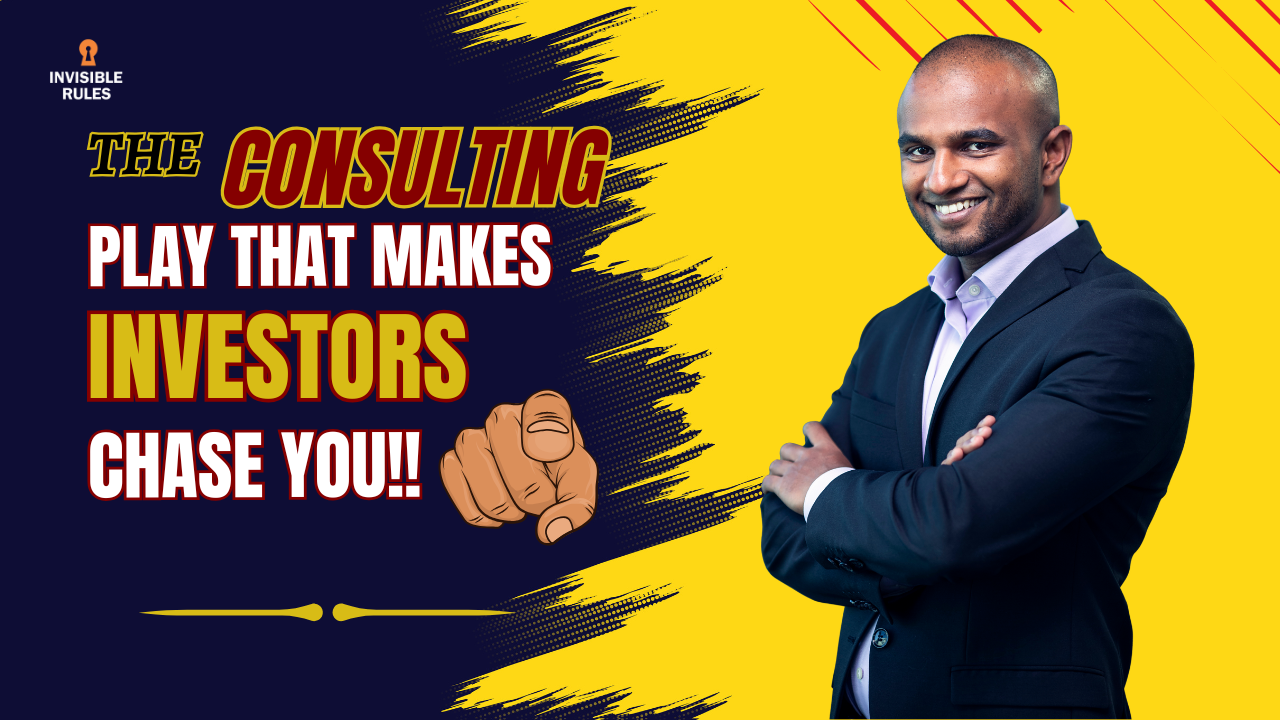- Invisible Rules
- Posts
- Great Meeting, Then... Crickets? 👻
Great Meeting, Then... Crickets? 👻
No, it's not them. It's you.
TLDR;
You left that sales meeting on cloud nine. They said, "This is really interesting!" Now… crickets. The brutal truth? Your follow-up email doesn't matter. The meeting was a failure from the start because you're playing a game without knowing the unwritten rules. You didn't sell; you just performed a pleasant, forgettable monologue.
In this issue, we'll tackle:
Why "This is interesting" is corporate code for "You may now exit the premises."
The three fatal mistakes you made during the meeting that guaranteed you’d be ghosted.
How to stop being a vendor and start being a mind-reader who closes deals.
A free diagnostic tool to perform an autopsy on your failed meetings and fix them for good.
Let's dive right in.
We’ve all been there. You walk out of a meeting with a potential whale, feeling like you just nailed the performance of a lifetime. The energy was electric. They were nodding, smiling, maybe even laughing at your jokes (or politely pretending to). They ended it with that warm, fuzzy phrase every founder clings to like a life raft: "This is really interesting. Send me an email."
You practically float back to your desk, craft the perfect follow-up, hit send, and wait for the inevitable next step.
And you wait.
And wait.
And now it’s been two weeks, and the only thing in your inbox is a 20% off coupon for office chairs.
The silence is maddening. You start to question everything. Was my subject line too boring? Did I use the wrong GIF? Should I have followed up sooner? Later? With a singing telegram?
Let me save you the therapy bill: The problem isn't your follow-up game. It’s not your email copy. It’s not that they’re “just really busy.”
The brutal, uncomfortable truth is that the meeting was a complete failure. The ghosting was a predictable outcome, decided and sealed before you even hit "End Meeting" on Zoom.
Why? Because most founders think business meetings are about presenting information. They're not. They are complex social arenas, little theaters of power where invisible rules dictate who is credible, whose ideas matter, and who is worth a reply. You didn’t just fail to close; you failed to read the room.
But don't worry. I’m here to help you perform an autopsy. Here are the three most likely reasons your "great" meeting was dead on arrival.
1. You Pitched the Person with the Title, Not the Power
You saw "Vice President" on the calendar invite and thought you had the decision-maker. Cute.
In most organizations, the official org chart is about as reliable as a weather forecast from a groundhog. Real power is performed, not titled. It’s the person everyone else in the room subtly glances at after you present a challenging idea. It’s the quiet senior analyst who can kill your deal with a single, skeptical question because, in their culture, data trumps intuition.
If you spent the entire meeting trying to impress the VP while failing to win over their trusted-but-lower-ranking validator, you were pitching a puppet, not the puppet master. You lost because you never even identified the real buyer.
2. You Failed the Secret Credibility Test
Your product is never the first thing being evaluated—you are.
From the moment you start talking, the prospect is running a silent diagnostic on you. Do you "belong"? Do you speak their coded language? Do you fit their unwritten rules for what a credible partner looks like?
Maybe they value people with specific academic credentials (“So, where did you do your PhD?”). Maybe they only trust people with experience at a FAANG company. Or maybe it’s as simple as the language you use. You call it an "inefficient workflow"; they call it a "process-optimization gap." You just signaled you’re an outsider.
If you walk into a pitch focused only on your solution's features and benefits, you've already missed the point. You're trying to win on logic in a game that's being scored on cultural fit.
3. You Didn't Reframe Their World (This is the BIG one)
This is the mistake that separates founders who get deals from founders who get ghosted. You walked in and offered a solution to the problem they think they have. A fatal error.
A great pitch doesn't just present a solution; it fundamentally changes how the prospect sees their own reality. Your job is to make them realize the problem they thought they had isn’t the real problem at all. The real problem is something they didn’t even see, and—what a coincidence!—it’s something only you can solve.
Until you successfully reframe their worldview, you’re just another vendor competing on price and features. The moment they adopt your frame and start asking questions using your language ("So, how do we measure our 'change fatigue' score?"), you have no competition. You've become a strategist, not a salesperson.
If you left their worldview intact, you gave them zero reason to change and zero reason to call you back.
Stop Guessing, Start Diagnosing
Look, learning to decode these hidden dynamics on the fly is tough. It takes practice. It’s part anthropology, part detective work, and part psychological warfare.
That’s why I created a tool to do it for you.
I’ve built The Post-Meeting Autopsy, a free diagnostic checklist that will help you dissect what really happened in that meeting that went silent. It walks you through the hidden power structures, the secret credibility tests, and the critical reframing moments you need to nail.
Use it to figure out what went wrong last time so you can walk into your next meeting with a devastatingly effective strategic advantage.
Stop wondering why you’re being ghosted. It’s time to learn the rules of the game you’ve been playing all along.
Your Turn Now:
After you've used the Post-Meeting Autopsy diagnostic tool, I'd love to hear what you discovered about your pitch process. What hidden dynamics did you uncover? What will you change for your next meeting?
Hit reply and share your insights. I'm genuinely curious to learn what this tool revealed for you.





Reply